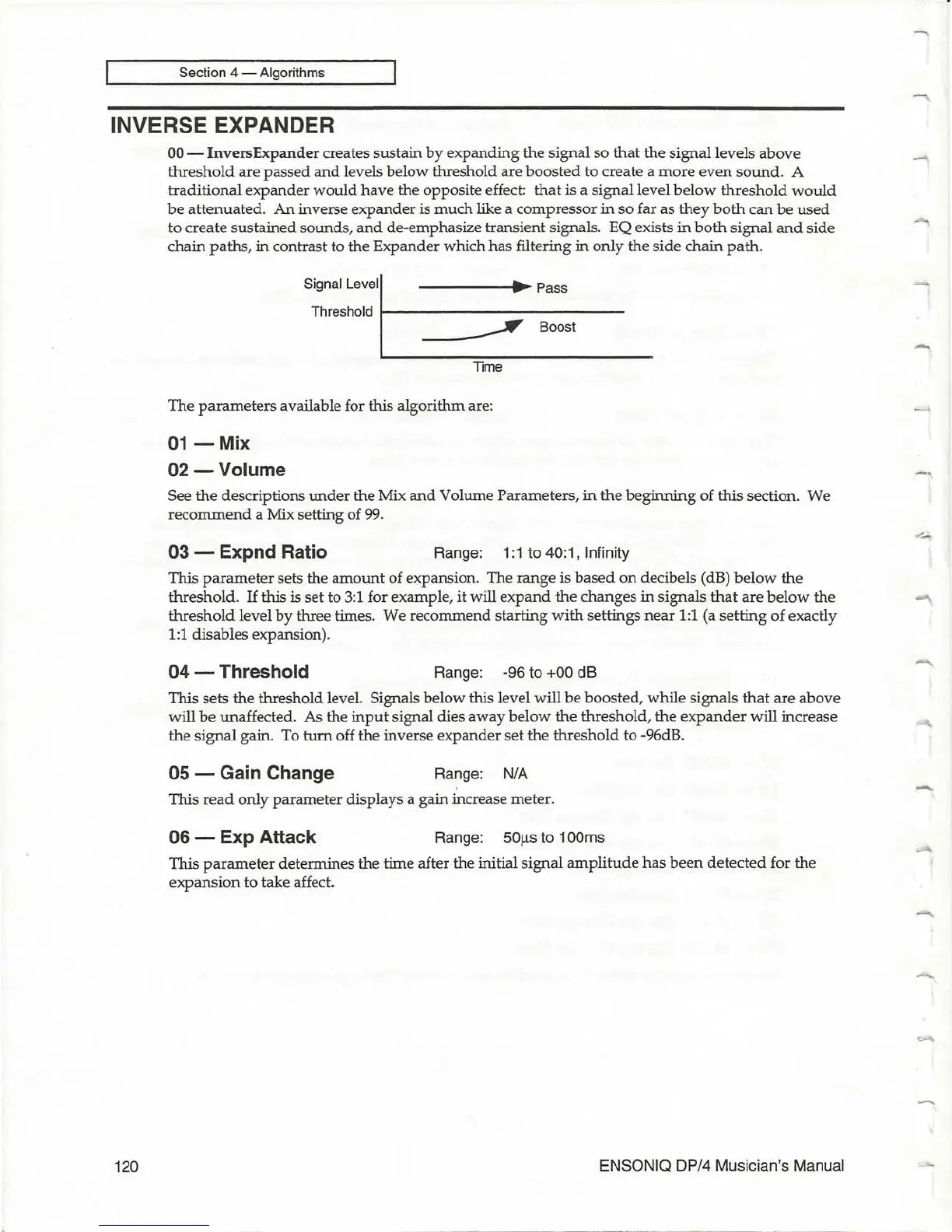Section 4 - Algorithms
INVERSE EXPANDER
120
00
-
InversExpander
creates sustain
by
expanding the signal
so
that
the
signal
levels above
threshold
are
passed
and
levels below threshold are
boosted
to create a
more
even
sound.
A
traditional
expander
would
have
the opposite effect:
that
is a signal level
below
threshold
would
be
attenuated.
An
inverse
expander
is
much
like a compressor
in
so far as
they
both
can
be
used
to create sustained sounds,
and
de-emphasize transient signals. EQ exists
in
both
signal
and
side
chain
paths,
in
contrast to the Expander which
has
filtering
in
only
the
side
chain
path
.
-----
...
~
Pass
Signal Levell
Threshold
1-.
-------------
~
Boost
~--------------
Time
The
parameters
available for this algorithm are:
01-Mix
02-Volume
See
the
descriptions
under
the Mix
and
Volume Parameters,
in
the
beginning
of
this section.
We
recommend
a Mix setting of
99.
03 - Expnd Ratio
Range: 1:1 to 40:1, Infinity
This
parameter
sets the
amount
of expansion. The
range
is
based
on
decibels (dB)
below
the
threshold
.
If
this is set to
3:1
for example, it will
expand
the
changes
in
signals
that
are
below
the
threshold
level
by
three times. We recommend
star
t
ing
with
settings
near
1:1
(a
setting
of
exactly
1:1
disables expansion).
04 - Threshold Range: -96 to +00 dB
This sets the threshold level. Signals
below
this level will
be
boosted, while signals
that
are
above
will
be
unaffected. As the
input
signal dies
away
below
the
threshold, the
expander
will increase
the
signal
gain. To
tum
off the inverse expander set the
threshold
to -96dB.
05 - Gain Change
Range:
N/A
This
read
only parameter displays a gain increase meter.
06 - Exp Attack
Range:
50/-LS
to 100ms
This
parameter
determines the time after the initial signal
amplitude
has
been
detected
for the
expansion
to take affect.
ENSONIQ DP/4 Musician's Manual
-
